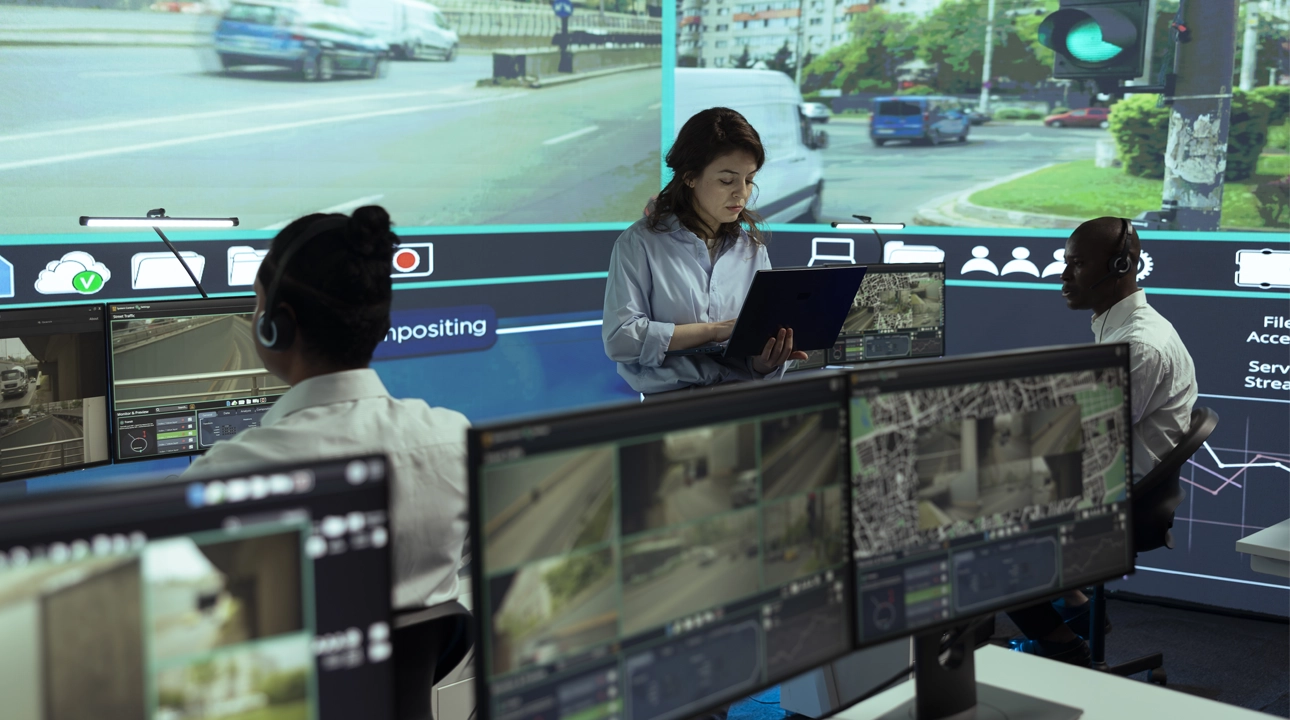Why control rooms don’t always run as efficiently as they should
For control rooms to work efficiently there are a range of factors that need to be carefully and methodically addressed. Slipping up on one or a few of these can have a significant effect on the operations delivered via the control room, sometimes with very tangible impacts for the customers that it serves. Over the years of our involvement in control room design and carrying out in-service reviews, we have observed control rooms running inefficiently for one or a few of the reasons outlined below.

The overall design approach or strategy can set the wrong foundations for efficient operations. Designing a control room based on what has worked well elsewhere or ‘typical’ arrangements can miss opportunities to optimise the fit of the solution with organisational aims, and tangible support of the needs of the operators who work in the room. Another risk related to design approach is that focusing too heavily on making the design efficient at day one can limit its long-term efficiency. This can lead to significant effects if the nature of operations carried out fundamentally change over time, but also as equipment, technology, job roles, occupancy and other variables shift across the years.
In terms of the design of specific elements or attributes of a control room, operator roles can lack suitable consideration of cognitive load and function allocation. As a result, staff can become overloaded and even overwhelmed, just when we need them to perform at their best.
Similarly, organisational design can devote too little consideration to how flexibility in operation can support management of operator workload. Flexibility should be built into organisational design features such as the structure of functional teams, supervisory roles, and levels of automation deployed in the control room. Too little flexibility can lead to lack of cohesion around ways of working, especially when there is pressure to be highly efficient during periods of peak workload. It can also inhibit workload management, for example there can be too little flexibility in how tasks can be divided or organised.
Of course, enabling operators to work effectively through the application of technology is a hugely significant factor in how control rooms work and has a major impact on overall productivity. Continual rapid development and innovation in technology means there are almost always opportunities to improve efficiency. However, the opportunities need to be balanced against the risks associated with frequent or extensive change, to ensure operators can maintain a high level of proficiency. A common challenge is too little integration of systems, especially when new technology is adopted, adding to the toolset but not necessarily resulting in other tools being removed. The result can be control room workstations crammed with a disparate array of hardware and lots of software for operators to master. Other problems can include ineffective rationalisation of alarms via technology, leading to manual coping mechanisms that are often ineffective and come with significant risks such as human error.
Continual rapid development and innovation in technology means there are almost always opportunities to improve efficiency. However, the opportunities need to be balanced against the risks associated with frequent or extensive change, to ensure operators can maintain a high level of proficiency.
Another cause of inefficiency in control rooms can be that they are designed with too much focus on how they will normally be used. Little consideration for less common scenarios, like when systems fail, when there are staff shortages, or when significant maintenance work needs to be undertaken leading to operators being forced to adopt inefficient ways of working for short or prolonged periods of time.
Inefficiency in control rooms can also stem from seemingly simple things like the overall arrangement of furniture and equipment. This can affect how people move around the room, and influence how they choose to use areas of it. It can also affect how efficiently information is shared and how well collective situational awareness is maintained. The overall arrangement includes consideration of circulation in normal use, as well as less typical situations. For example, there may be times when many more people than normal move into the room, or there is a greater concentration of people working in one area. This could be when an operational incident occurs, or when one is simulated as part of a training exercise.
To ensure an efficient control room operation there is also a need for careful consideration in the layout arrangement, for supporting strong verbal communication between operators while maintaining effective sightlines to colleagues. These factors can create competing requirements and the compromises made can result in inefficient working.

Major design characteristics of the chosen room space, regardless of furniture and equipment, can also influence the efficiency of operations. Operators can be distracted, feel uncomfortable and be more susceptible to fatigue if daylight is not well controlled, artificial lighting is not well designed, noise is poorly managed, air movement is badly designed, and temperature is not suitably controlled.
From a human-centred design perspective it is absolutely key to always bear in mind that people have limits. No matter how well equipped a control room is, too little consideration for the comfort of operators can limit how long they can sustain high performance levels. This can relate to the general sense of comfort in the room, like lighting, sound, temperature and air movement, but also selection of appropriate, high quality and well considered furniture and room finishes. Connected to this, lack of cohesion with Display Screen Equipment best practice (or similar relevant requirements in other countries or regions) can over time lead to long term health risks and prolonged absence of critical knowledge workers.
From a human-centred design perspective it is absolutely key to always bear in mind that people have limits. No matter how well equipped a control room is, too little consideration for the comfort of operators can limit how long they can sustain high performance levels.
Since it is easy to think about the control room function as being bounded by four walls, there can also at times be a lack of rigour in the provision and design of supporting spaces. If we design shift patterns and breaks well we create the opportunity for restorative rest. However, this can be undermined by uninviting or poorly equipped rest rooms and welfare spaces, leading to staff returning from a break without restored energy levels. Poor provision or design of rooms for training, incident management and other key functions can also compromise control room efficiency. If operators decide to use the control room for meetings or training activities, it risks distracting others and disrupting operations.
The many factors outlined above, which can affect control room efficiency, can be effectively addressed through a human-centred and inclusive design process. Beyond tackling efficiency there are other benefits that thorough, well considered design can bring, including enhanced safety and better operator experience. Safety has clear implications, especially considering the operationally critical nature of most control rooms. The operator experience can often be undervalued, but it can play a key part in minimising staff turnover, which in turn helps maintain organisational knowledge and integration of extensive expertise into training and mentoring.
Written by:

Paul Reynolds
Principal Industrial Designer
Paul has a broad range of experience in engaging end users in the design of complex workplaces. He recently delivered control room design work to Banedanmark for a major project in Copenhagen, and interior design advice to CERN for their main design office in Geneva. Paul holds a BA (Hons) in Industrial Design and Technology.